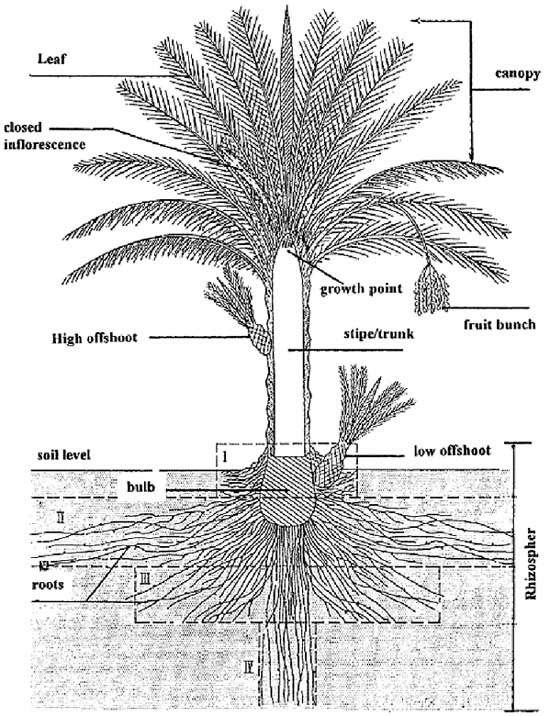
Today I embarked on quest to remove a large date palm tree from the garden. I consulted with someone with more experience than myself, and he recommended that I chop it up with an axe. I had seen these date palm trees fall over and their root system looked flimsy, so I thought it would be easier to dig it out.
It took me about six hours. It was a complex operation which required a lot of trial and error until I understood what I was actually trying to do. The bottom of the palm tree has a bulb from which numerous appendages like ropes come out. In a healthy palm tree such as my nemesis, it is necessary to sever most of these roots to dig out the tree.
Chopping it up would have been faster, but the intimate time spent reaching under the palm tree to tug at its roots by hand proved to be very instructive. I was reminded of Goethe, his initial inspiration for The metamorphosis of plants was precisely a palm tree. Its leaves fall leaving behind a trunk, and looking at the palm tree's bottom it is evident how this happens. It's roots too, are made from the same fibers that you can see on the leaves when you cut them.
I thought: will man ever be able replicate the power of a seed? From a tiny device emerges a tiny sail which captures light. The light serves as power to extract carbon from the atmosphere so that the plant can build itself. After it reaches maturity it attempts to replicate itself, but since it is bound to the ground and it needs to extend it's reach, it entices other organisms to transport its DNA when they snack on their fruit.
How is it that we can't send thousands of pellets to the moon, and from these pellets emerge nano machines which, powered by the sun, collect minerals to build themselves into more complex machines and so forth?
It this capacity exclusive to nature?